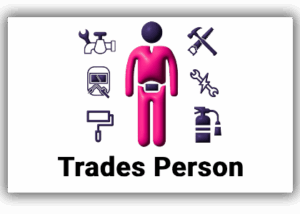Blue Collar, Grey Collar & White Collar: Key Differences
When we talk about jobs, terms like white collar, blue collar, and grey collar often come up — but what do they really mean? Although these labels had once started with the clothing colors of the respective jobs, they now represent different kinds of work, skills, and lifestyles. From office desks to factory floors to roles that blend both, each category plays a vital role in keeping our economy running. Each has key differences in what they involve, the kind of workers they attract, and how each contributes to the modern workforce.
White collar jobs:
These are typically office-based roles that involve mental or administrative work rather than physical labor. For example: managers, software developers, lawyers, marketing executives.

Blue collar jobs:
These involve manual labor or skilled trades, often in industrial, construction, or service sectors. For example: electricians, plumbers, delivery personnel, factory workers, security guards.

Grey collar jobs:
These fall somewhere between white and blue collar work. They may require both technical skills and mental effort. For example: technicians, healthcare support staff, IT support, skilled machine operators, accountants.

Key Differences
| Feature | White-Collar | Blue-Collar | Grey-Collar |
| Type of Work | Mental/Administrative | Manual/Skilled Labor | Hybrid (Technical + Physical) |
| Skills Required | Analytical thinking, communication, problem-solving | Technical proficiency, physical stamina, hands-on expertise. | Specialized technical skills plus ability to coordinate or report |
| Education Required | College/Professional | Vocational/Training | Certification/Technical Training |
| Work Environment | Office | Factory/Field | Office + Field |
| Pay Structure | Salary | Hourly or daily Salary | Salary + Performance Incentives |
No single type of work can keep an economy running on its own. White collar, blue collar, and grey collar roles each play a unique and vital part. While white collar workers drive strategy, planning, and innovation, blue collar workers build, maintain, and deliver essential services. Grey collar workers bridge the gap, combining technical skills with practical execution. Together, they create a balanced workforce where every role supports the other — proving that every job, regardless of title or setting, is necessary for society to function and thrive.
Popular Job Groups


















